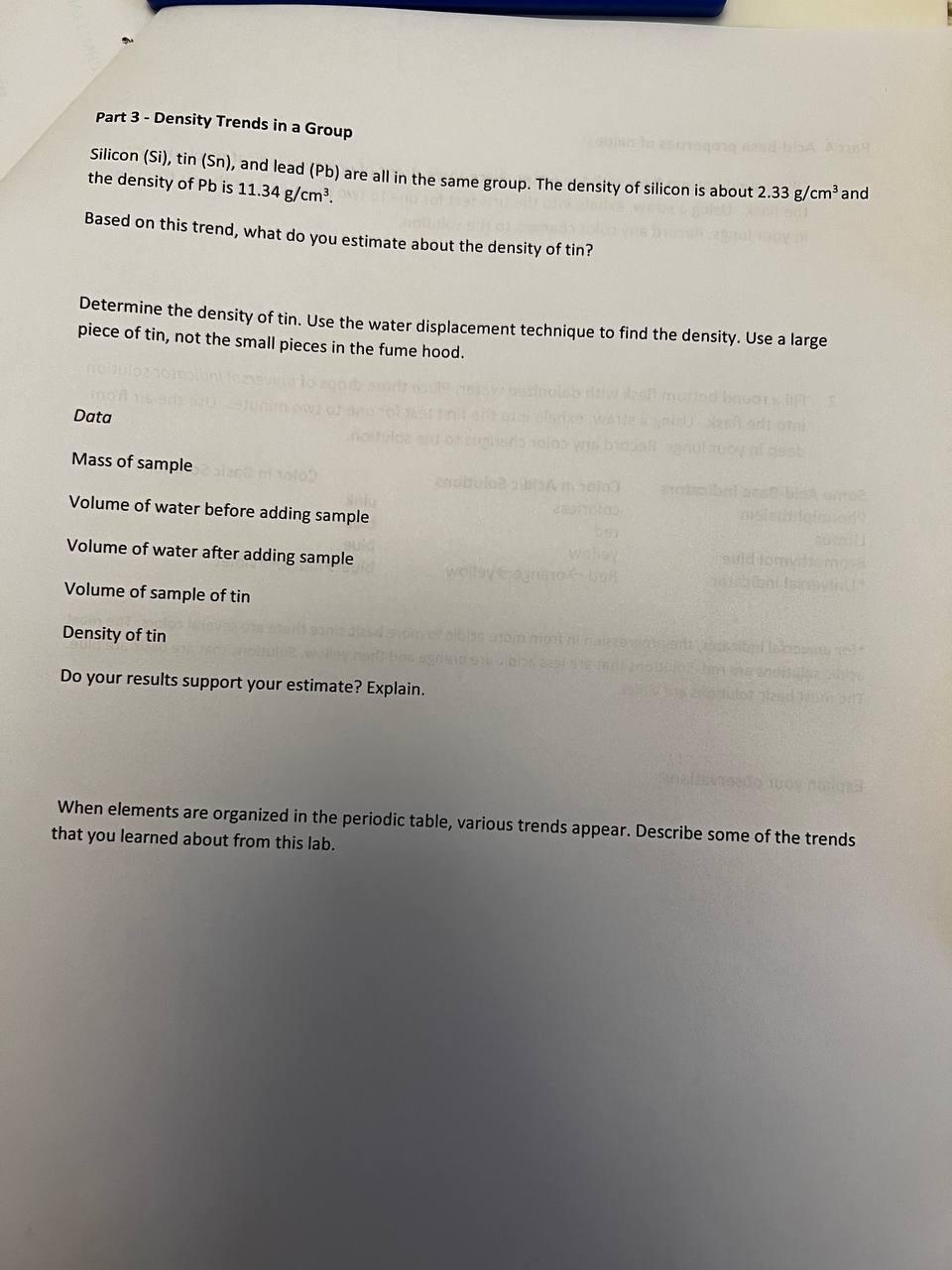Answered step by step
Verified Expert Solution
Question
1 Approved Answer
The structure of the periodic table is such that elements with similar properties are aligned vertically in columns called groups or families. this leads



The structure of the periodic table is such that elements with similar properties are aligned vertically in columns called "groups "or "families". this leads to smoothly varying trends in properties such as ionization energy and atomic radius, as one moves both down within a specific group or horizontally. The reactivity of the elements also follow well-defined trends both within the group and across a given row. In this experiment, you will explore these trends in reactivity for the elements. Elements in the Periodic Table are organized by increasing atomic number. As atomic number increases so does the number of electrons. Electrons, and specifically valence electrons, are important in determining how an atom interacts with other atoms. The elements in a group (vertical column) have similar properties because they have valence electrons in similar configurations. The elements in the periodic table are divided into categories. Not only is this system useful for finding element but much can be predicted about an element based on its position on the periodic table. Aim: To explore trends in the periodic table Part 1: Trends in Properties within Groups 1. Place a small strip of magnesium in a test tube and cover with water. Look closely and observe what happens 2. Place a small piece of calcium in a test tube with several milliliters of water. Record your observations. Part 2 - Activity Series of Some Metals in HCI 1. Obtain a small sample of zinc and tin. You may reuse the magnesium from Part 1. Dump out the water from the test tube containing the magnesium but keep the magnesium in the test tube. Place zinc and tin in separate tubes. 2. Add a small amount of 1.0M HCI to each test tube, just enough to cover the sample. Record your observations. aldstolbanga 136 sioloxs oT miA List the four metals from most reactive to least reactive. Use data from your lab to support your answer. In general, is there a relationship between the locations of metals on the Periodic Table and their relative activity? Explain why. 2 2 Part 3 - Density Trends in a Group Silicon (Si), tin (Sn), and lead (Pb) are all in the same group. The density of silicon is about 2.33 g/cm and the density of Pb is 11.34 g/cm. Based on this trend, what do you estimate about the density of tin? Determine the density of tin. Use the water displacement technique to find the density. Use a large piece of tin, not the small pieces in the fume hood. 102 10 mont Data Mass of sample enobuk robabl Volume of water before adding sample be Volume of water after adding sample Volume of sample of tin bbbs atoin mont Density of tin Do your results support your estimate? Explain. suid tomydie kloz gled aux Snalliansedo When elements are organized in the periodic table, various trends appear. Describe some of the trends that you learned about from this lab.
Step by Step Solution
★★★★★
3.36 Rating (159 Votes )
There are 3 Steps involved in it
Step: 1

Get Instant Access to Expert-Tailored Solutions
See step-by-step solutions with expert insights and AI powered tools for academic success
Step: 2

Step: 3

Ace Your Homework with AI
Get the answers you need in no time with our AI-driven, step-by-step assistance
Get Started


